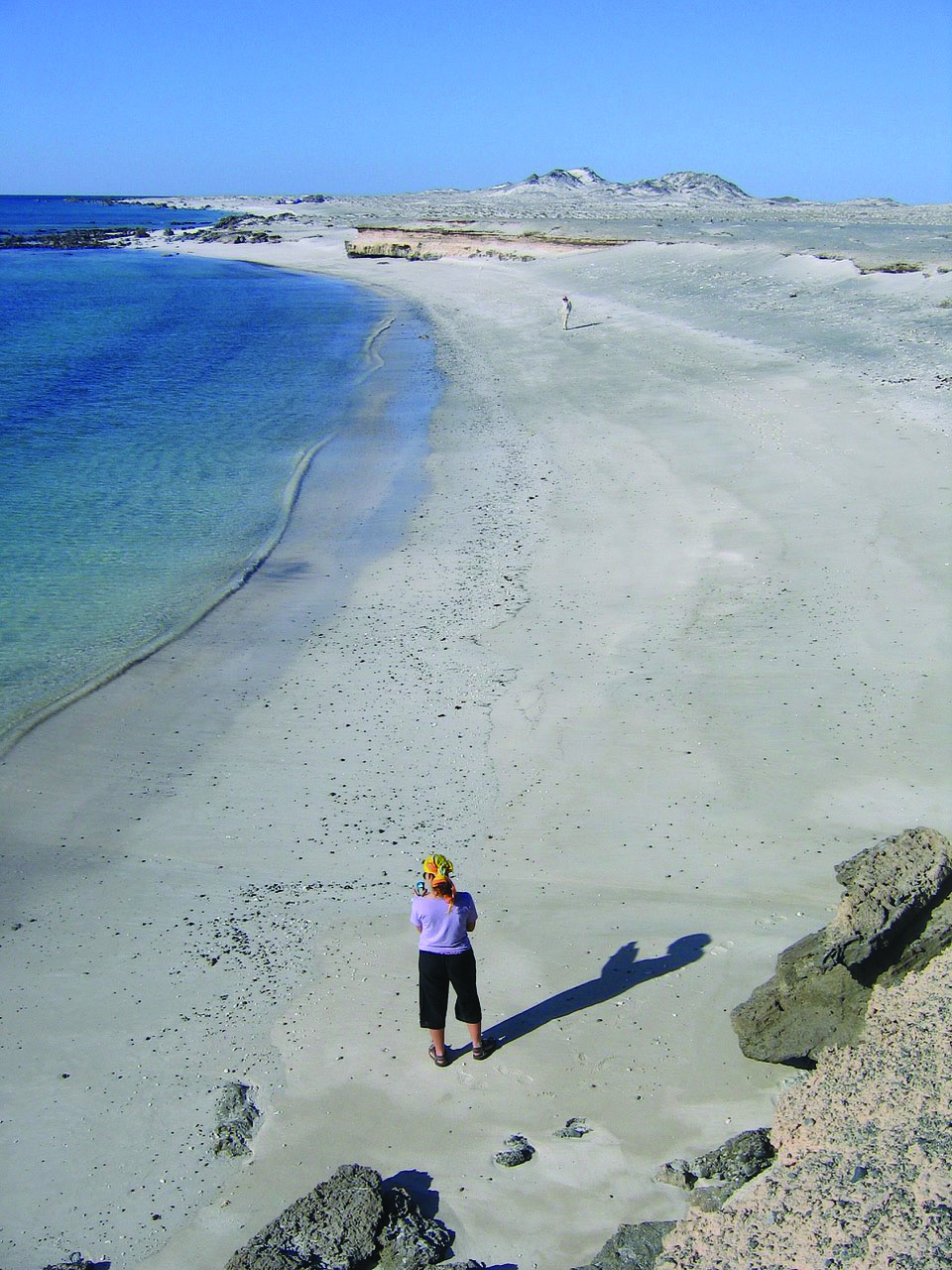

Did you know that a species, for long among the great rarities of the shell world, has been first collected from Masirah Island during the first half of the 19th century?
The island is now known to be the principal haunt of Cypraea teulerei, a beautiful cowrie (a group of small to large sea snails).
Oman has deep and cool waters that favour the development of molluscan life along the coast of the country, and most notably Masirah.
“The influence of Khareef during summer months is decisive for the abundance of molluscs,” mentions Nancy Papathanasopoulou, a senior nature conservation consultant from Athens, Greece.

Nancy worked as Project Manager, Kuwait Turtle Conservation Project, and earlier with the Ministry of Environment in Oman from 2004 to 2009.
She says molluscs and other organisms benefit from the rise of nutrients and food productivity created by this phenomenon, especially where subsequent rapid warming helps maintain coral communities.
The most conspicuous result of the cold upwelling is the existence of endemic species along the coasts of southern Oman, and around Masirah Island.
Nancy was the field coordinator and adviser to the Masirah Turtle Conservation Project (MTCP) possessing an incredible collection of sea shells collected from her days at Masirah which she now preserves at her Athens home.
Over four years of strolling up and down Ras Radum, Nancy found 7 shells that were interesting and in good condition, worth collecting.
Ras Radum coast stretches along seven kilometres in the east coast of Masirah.
Martyn Day, an excellent teacher who lived and worked in Masirah for over 20 years, was also an amateur malacologist-perfectionist.
A keen environmentalist and a diver and an artist of ‘shelling’, Martyn never tires of teaching those who are genuinely interested in everything about seashells about the ‘ethics of shelling’.
Martyn worked at the RAFO base in Masirah and was a great seashell collector for 25 years and a key contributor to the big book Seashells of Eastern Arabia.
He is skeptical about amateur shellers and believes people should need permits to take shells away from the rich beaches of Masirah.
Molluscs and their shells have played an important role in the economies of Arabian territories for thousands of years.
Martin and his wife marveled at the beauty of the shells they collected among some of them.
“We started a collection which was destined for science and education, in both the Sultanate and the UK.”
He became interested in molluscs and seashells and approached Nancy if she could help from her collection for the Environmental Information Centre which they launched in Masirah Municipality. The couple asked for a few shells but given their extraordinary work, Nancy decided to donate her entire collection destined at Oman.
“After 25 years of systematic collection and identification, it was now time to give back everything to the people and visitors of Masirah Island,” mentions Nancy.
Famous among collectors for its frivolous orange and semi-symmetrical ‘crescent moons’ on white background is the Punctacteon eloiseae or ‘The Eloise shell’, scientifically discovered by Dr
Donald Bosch for the first time in 1970 after he obtained some specimens from local fishermen in Masirah.

Until then the island, now famous for its remarkable shell fauna, had been almost inaccessible to those with a specific interest in shells. Appropriately, the scientific name of this new shell commemorates the name of the discoverer’s wife, Eloise Bosch.
Amelia German, a yoga teacher based in Masirah, also has her collection of Eloise shell and fossil of shells found at the top of Red Mountain in the island. Many such fossils as well as fossilized corals from thousands of years ago can be found here when mountain tops were under the sea bed.
As a shell collector during her tenure at Masirah, Nancy explains that a good shelling guide is necessary while walking on the beach. A stick to ‘stir’ amongst multitudes of fragments and pebbles to discover the ‘right shell’ is required.
Nancy mentions that it is only the experienced ‘sheller’ who spots the pieces worth collecting along the Island. Being a good ‘sheller’ requires skill, patience, perseverance and an eye for beauty and accuracy.
“Lack of fear for hermit crabs which often attack your fingers from the shell have picked up and served as their home, in a frantic attempt to escape the earthquake you are creating by picking it up.
Shelling is an art to be developed. Some tire of it quickly, others commit for life,” mentions Nancy.
Thousands of seashells, their tenants ‘liberated’ by waves of flying predators, are strewn on these beaches. When in Masirah, watch carefully where you are walking. It may be on jewelry, cautions Nancy.


Oman Observer is now on the WhatsApp channel. Click here



